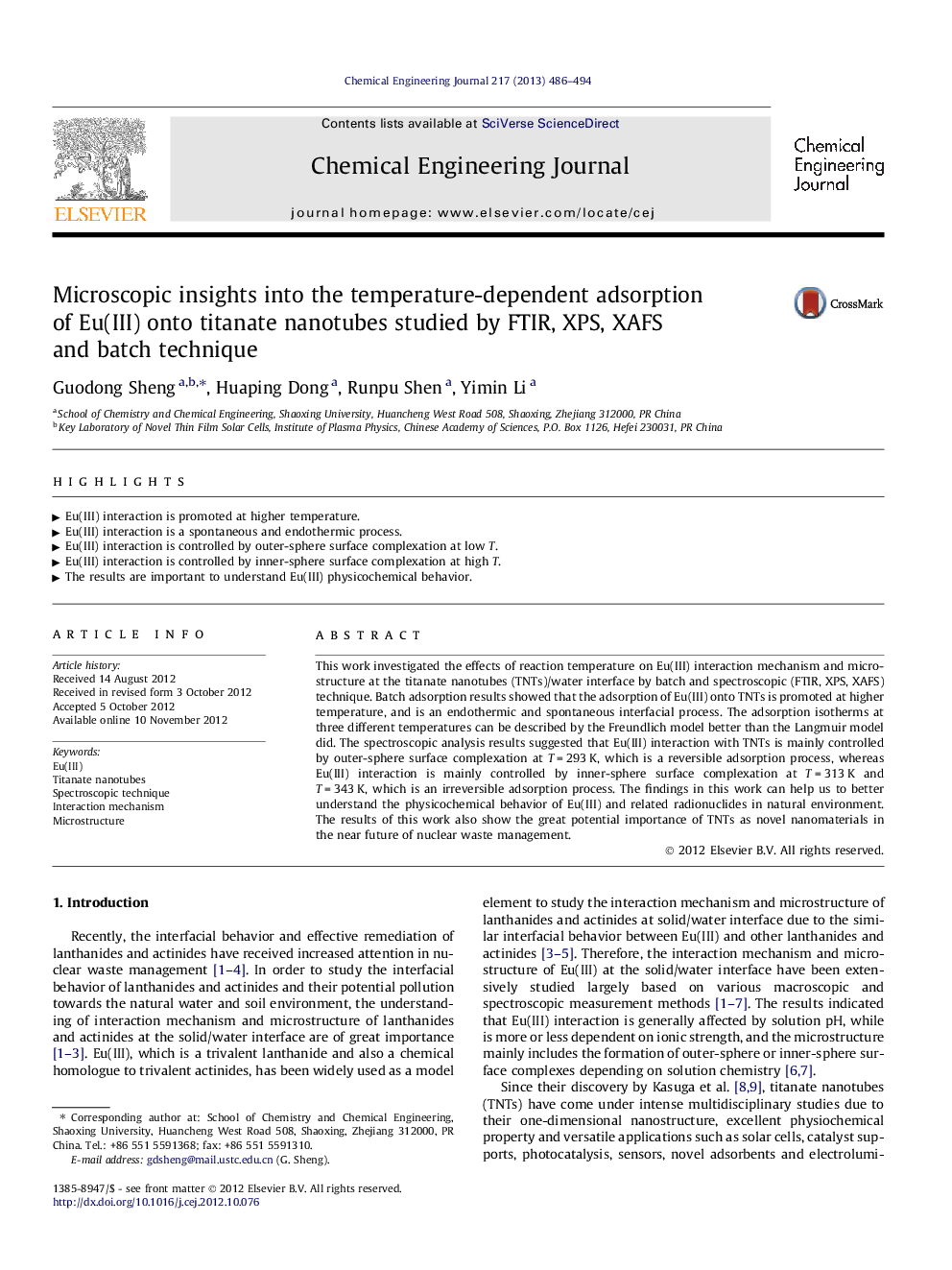| Article ID | Journal | Published Year | Pages | File Type |
|---|---|---|---|---|
| 148843 | Chemical Engineering Journal | 2013 | 9 Pages |
This work investigated the effects of reaction temperature on Eu(III) interaction mechanism and microstructure at the titanate nanotubes (TNTs)/water interface by batch and spectroscopic (FTIR, XPS, XAFS) technique. Batch adsorption results showed that the adsorption of Eu(III) onto TNTs is promoted at higher temperature, and is an endothermic and spontaneous interfacial process. The adsorption isotherms at three different temperatures can be described by the Freundlich model better than the Langmuir model did. The spectroscopic analysis results suggested that Eu(III) interaction with TNTs is mainly controlled by outer-sphere surface complexation at T = 293 K, which is a reversible adsorption process, whereas Eu(III) interaction is mainly controlled by inner-sphere surface complexation at T = 313 K and T = 343 K, which is an irreversible adsorption process. The findings in this work can help us to better understand the physicochemical behavior of Eu(III) and related radionuclides in natural environment. The results of this work also show the great potential importance of TNTs as novel nanomaterials in the near future of nuclear waste management.
► Eu(III) interaction is promoted at higher temperature. ► Eu(III) interaction is a spontaneous and endothermic process. ► Eu(III) interaction is controlled by outer-sphere surface complexation at low T. ► Eu(III) interaction is controlled by inner-sphere surface complexation at high T. ► The results are important to understand Eu(III) physicochemical behavior.
